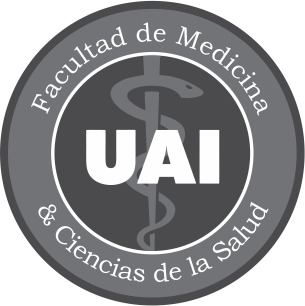Pneumonitis secondary to silicone lung embolism in transgender women living with HIV
DOI:
https://doi.org/10.59471/ijhsc2022112Keywords:
HIV, lung diseases, interstitial, dimethylpolysiloxane, silicones, pulmonary embolismAbstract
Dimethylpolysiloxane (silicone) has been widely used in the last decades in soft tissue augmentation procedures. In Argentina, approximately 54% of transgender people had liquid silicone or industrial oil injection and 91% of them where applied outside the health system. Silicone particles may migrate into lung vessels generating a syndrome similar to fat embolism, usually starting within 72 hours following silicone injection, although it has been described months to years after. We hereby present two cases of pneumonitis secondary to silicone lung embolism in transgender women living with HIV. Both patients were diagnosed through CT scan and bronchoalveolar lavage, and received supportive therapy with favorable outcome. Silicone lung embolism should be included as a differential diagnosis of pneumonitis, especially in transgender population.
Downloads
References
Narins RS, Beer K. Liquid injectable silicone: a review of its history, immunology, technical considerations, complications, and potential. Plast Reconstr Surg. 2006; 118 (3 Suppl):77S-84S. https://doi.org/10.1097/01.prs.0000234919.25096.67
Clark RF, Cantrell FL, Pacal A, Chen W, Betten DP. Subcutaneous silicone injection leading to multi-system organ failure. Clin Toxicol (Phila). 2008; 46 (9):834-7. https://doi.org/10.1080/15563650701850025
Chastre J, Brun P, Soler P, Basset F, Trouillet JL, Fagon JY, Gibert C, Hance AJ. Acute and latent pneumonitis after subcutaneous injections of silicone in transsexual men. Am Rev Respir Dis. 1987 Jan; 135 (1):236-40. https://doi.org/10.1164/arrd.1987.135.1.236
Hariri LP, Gaissert HA, Brown R, Ciaranello A, Greene RE, Selig MK, Kradin RL. Progressive granulomatous pneumonitis in response to cosmetic subcutaneous silicone injections in a patient with HIV-1 infection: case report and review of the literature. Arch Pathol Lab Med. 2012; 136 (2):204-7. https://doi.org/10.5858/arpa.2011-0149-cr
Programa Nacional de Salud Sexual y Procreación Responsable. Ministerio de Salud de la Nación. (2015). Atención de la salud integral de personas trans. Guía para equipos de salud. Disponible en http://www.msal.gob.ar/images/stories/bes/graficos/0000000696cnt-guia-equipos-atencion-Salud%20integral-personas-trans.pdf
Berkins, L. (comp.). Cumbia, copeteo y lágrimas. Informe nacional sobre la situación de las travestis, transexuales y transgéneros. Buenos Aires: ALITT. 2007.
Chen YM, Lu CC, Perng RP. Silicone fluid-induced pulmonary embolism. Am Rev Respir Dis. 1993 May; 147 (5):1299-302. https://doi.org/10.1164/ajrccm/147.5.1299
Schmid A, Tzur A, Leshko L, Krieger BP. Silicone embolism syndrome: a case report, review of the literature, and comparison with fat embolism syndrome. Chest. 2005 Jun; 127 (6):2276-81. https://doi.org/10.1378/chest.127.6.2276
Duffy DM. Liquid silicone for soft tissue augmentation. Dermatol Surg. 2005; 31 (11 Pt 2):1530-41. https://doi.org/10.2310/6350.2005.31238
Restrepo CS, Artunduaga M, Carrillo JA, Rivera AL, Ojeda P, Martinez-Jimenez S, Manzano AC, Rossi SE. Silicone pulmonary embolism: report of 10 cases and review of the literature. J Comput Assist Tomogr. 2009; 33 (2):233-7. https://doi.org/10.1097/rct.0b013e31817ecb4e
Males S, Joly V, Adle-Biassette H, Abgrall S, Lariven S, Leboulanger N, Yeni P. Silicone in HIV-1-infected patients: a cause of misdiagnosed granulomatous disease. Int J Infect Dis. 2010; 14 Suppl 3:e277-9. https://doi.org/10.1016/j.ijid.2009.11.025
Gopinath PP, Ali A, Van Tornout F, Kamath A, Crawford M, Nicholson AG. Chronic silicone embolism syndrome due to PIP breast implant leakage – a new entity? Histopathology. 2015; 66 (6):904-6. https://doi.org/10.1111/his.12518
Murariu D, Holland MC, Gampper TJ, Campbell CA. Illegal silicone injections create unique reconstructive challenges in transgender patients. Plast Reconstr Surg. 2015; 135 (5):932e-933e. https://doi.org/10.1097/prs.0000000000001192
Lyapichev K, Chinea FM, Poveda J, Pereda J, Bejarano PA, Garcia-Buitrago MT. Pulmonary Empty Spaces: Silicone Embolism-A Decade of Increased Incidence and Its Histological Diagnosis. Case Rep Pathol. 2016; 2016:3741291. https://doi.org/10.1155/2016/3741291
Pinto TP, Teixeira FDB, Barros CRDS, Martins RB, Saggese GSR, Barros DD, Veras MASM. Silicone líquido industrial para transformar o corpo: prevalência e fatores associados ao seu uso entre travestis e mulheres transexuais em São Paulo, Brasil. Use of industrial liquid silicone to transform the body: prevalence and factors associated with its use among transvestites and transsexual women in São Paulo, Brazil. Cad Saude Publica. 2017; 33 (7):e00113316. https://doi.org/10.1590/0102-311x00113316
Krayukhina E, Yokoyama M, Hayashihara KK, Maruno T, Noda M, Watanabe H, Uchihashi T, Uchiyama S. An Assessment of the Ability of Submicron- and Micron-Size Silicone Oil Droplets in Dropped Prefillable Syringes to Invoke Early- and Late-Stage Immune Responses. J Pharm Sci. 2019; 108 (7):2278-2287. https://doi.org/10.1016/j.xphs.2019.02.002
Goldblum RM, Pelley RP, O'Donell AA, Pyron D, Heggers JP. Antibodies to silicone elastomers and reactions to ventriculoperitoneal shunts. Lancet. 1992; 340 (8818):510-3. https://doi.org/10.1016/0140-6736(92)91710-p
Chung KY, Kim SH, Kwon IH, Choi YS, Noh TW, Kwon TJ, Shin DH. Clinicopathologic review of pulmonary silicone embolism with special emphasis on the resultant histologic diversity in the lung-- a review of five cases. Yonsei Med J. 2002; 43 (2):152-9. https://doi.org/10.3349/ymj.2002.43.2.152
Published
How to Cite
License
Copyright (c) 2022 Julian Garcia, Andres Benchetrit, Ignacio Martin, Yamila Masuero, Marcela Natiello, Nuria Lázari, Diana Troncoso, Ruben Solari, Roberto Dure, Liliana Castro Zorrilla

This work is licensed under a Creative Commons Attribution-ShareAlike 4.0 International License.













